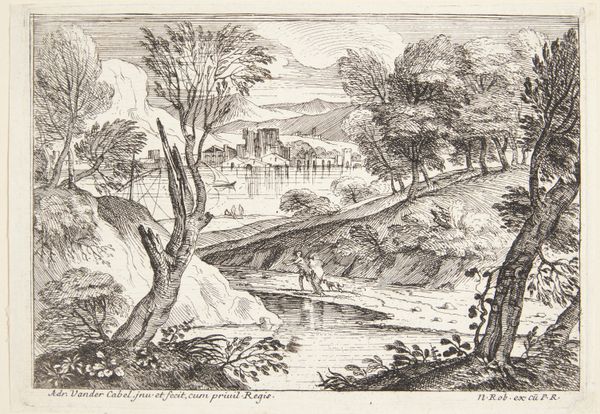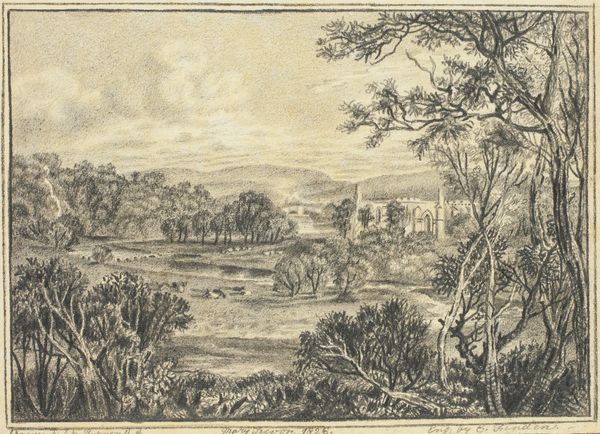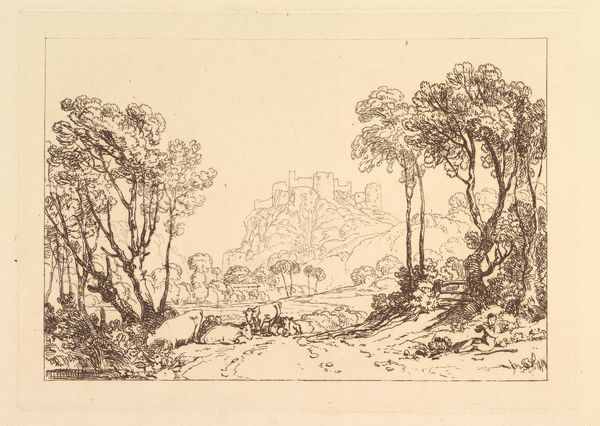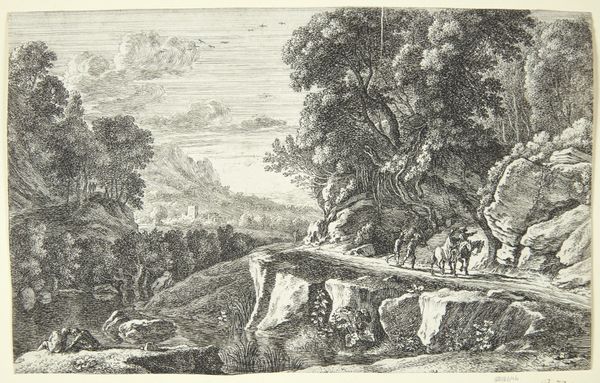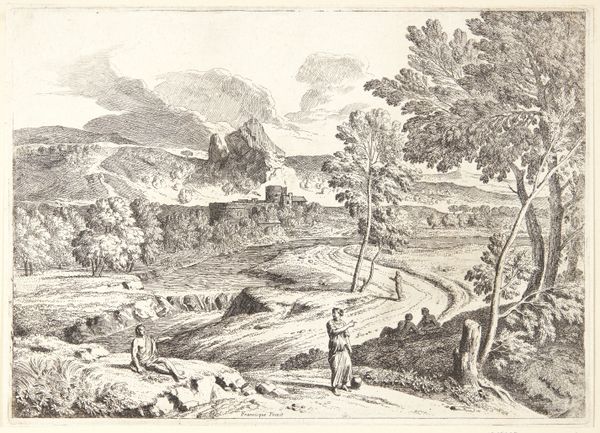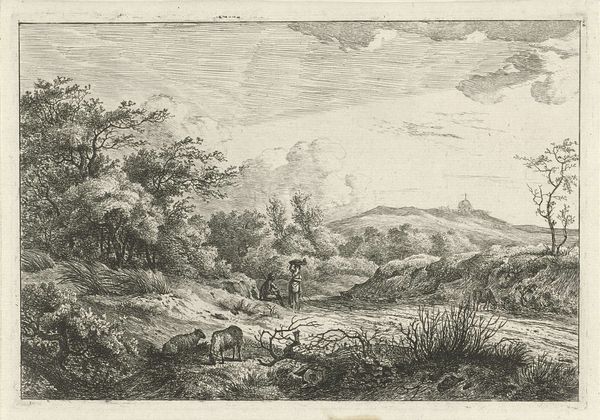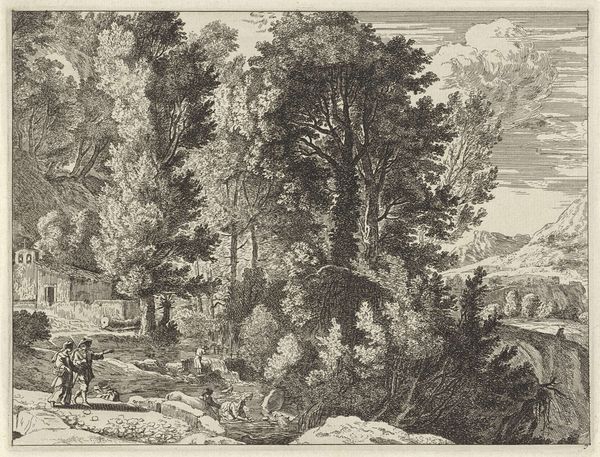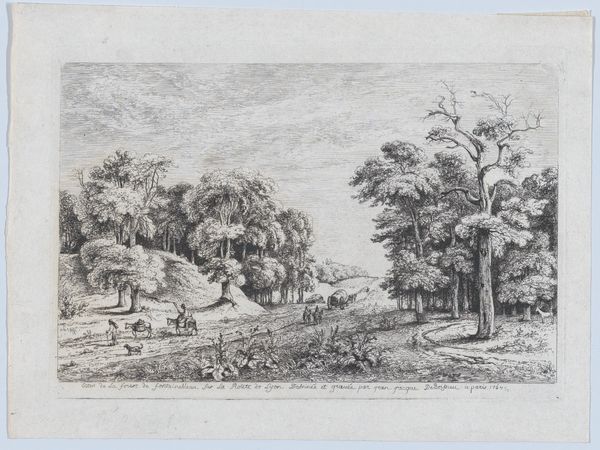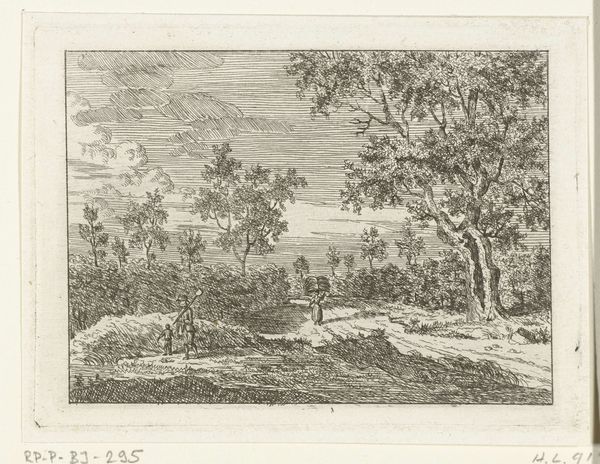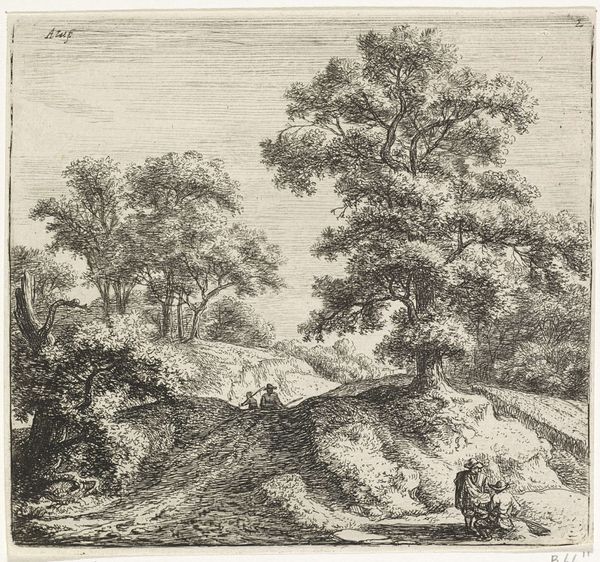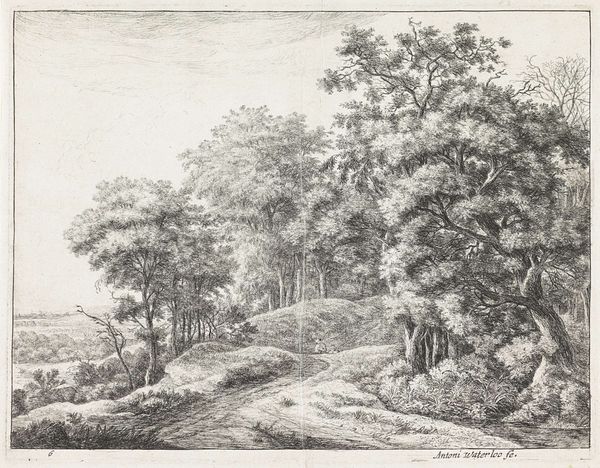
Landskab med en fisker og en gående og liggende figur 1690 - 1730
0:00
0:00
drawing, print, etching, ink
#
pen and ink
#
drawing
#
ink drawing
# print
#
etching
#
landscape
#
figuration
#
ink
Dimensions: 202 mm (height) x 293 mm (width) (Plademål)
Editor: This etching, "Landscape with a Fisherman and a Walking and Lying Figure," is from somewhere between 1690 and 1730. I find the contrast between the busy foreground and the hazy background really intriguing. How do you interpret the composition in the context of its time? Curator: That contrast you notice is key. Consider how landscape imagery functioned in that era. It wasn't just about pretty scenery. It was about establishing power, defining territories, and conveying ideas about civilization versus nature. Does this landscape strike you as particularly wild or tamed? Editor: More tamed, I think. The figures seem almost staged within the scene, not really interacting with it. Curator: Exactly. That sense of artifice tells us something. The "natural" world here is carefully constructed, possibly to evoke a specific ideal or classical reference, connecting to notions of Arcadia popular among the elite. Notice the etching technique; what does that detailed work evoke to you? Editor: It feels almost scientific in its precision, but also idealized – not a realistic depiction of nature. It makes me wonder who this image was made for and what purpose it served. Curator: Good question! Etchings like these were often reproduced and circulated as prints, accessible to a wider audience beyond the elite. They shaped perceptions and disseminated ideas about the relationship between humanity and the landscape, and underscored social hierarchies. Consider the power dynamic embedded within such constructed views. Editor: I never thought about landscape having that much of a constructed, political meaning. It’s fascinating to consider how the image itself played a role in shaping cultural values! Curator: Precisely! Examining art through the lens of history unveils these hidden dimensions. Understanding its role in the public sphere helps to unravel power structures from the past.
Comments
No comments
Be the first to comment and join the conversation on the ultimate creative platform.

